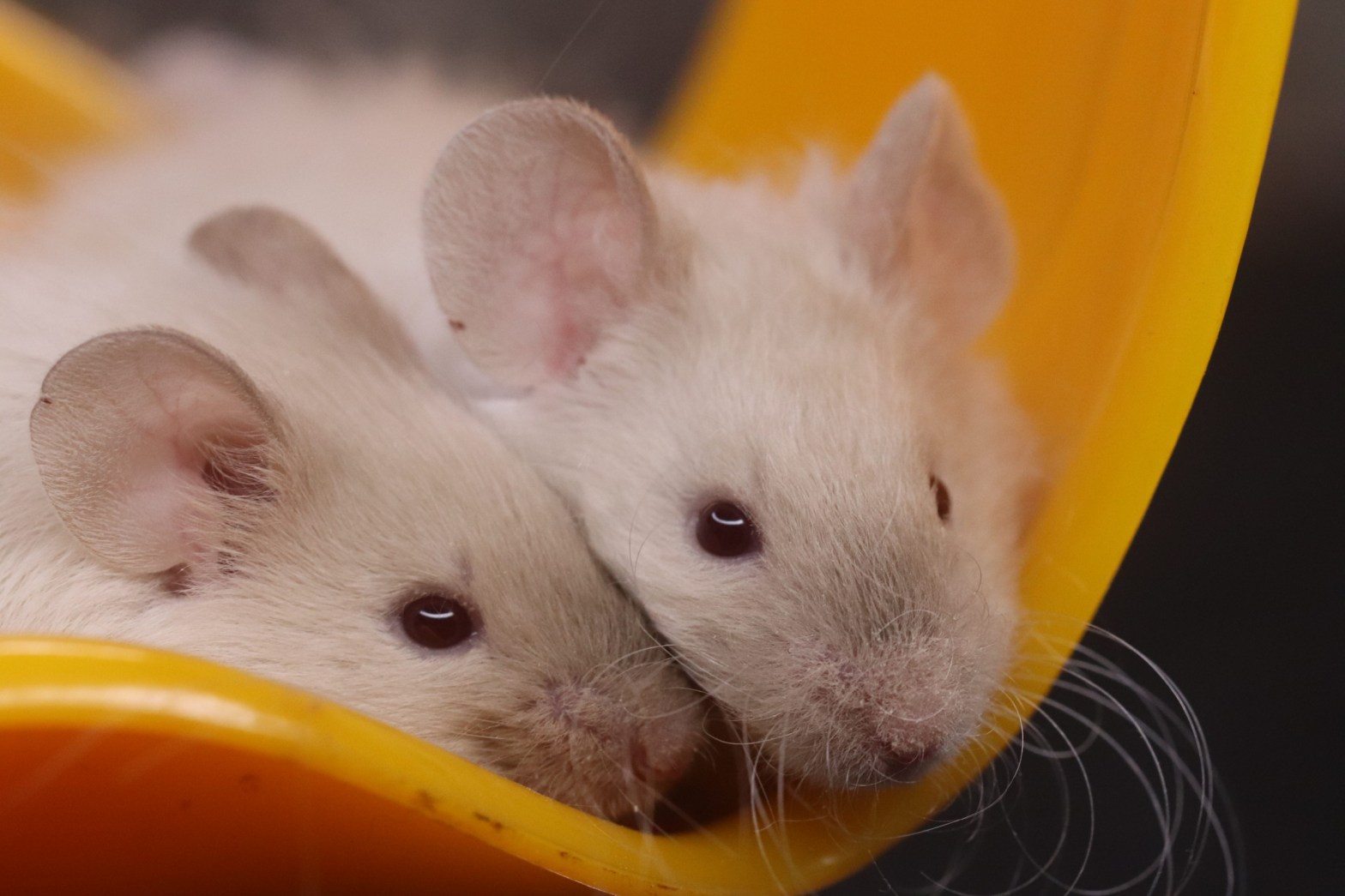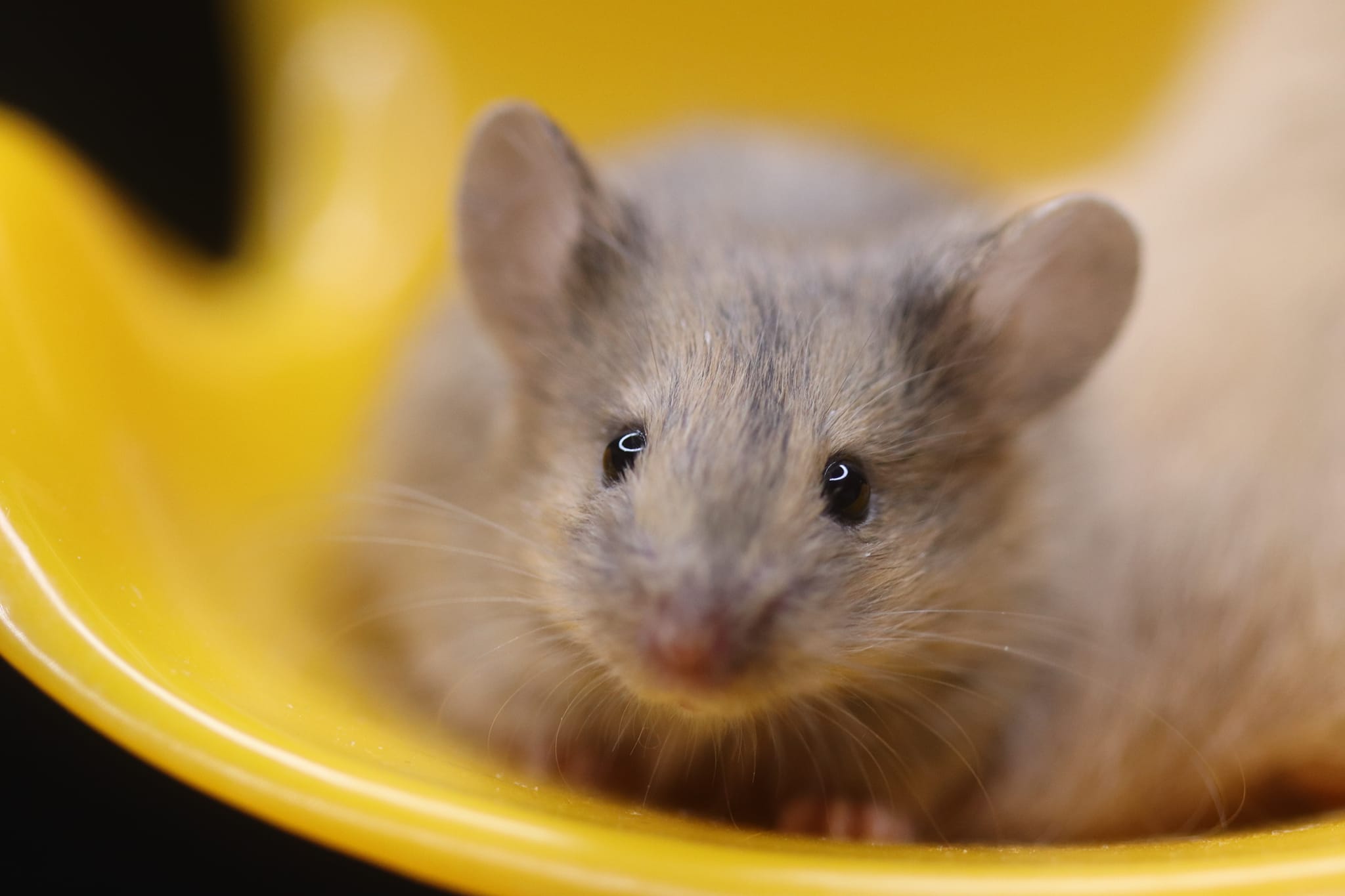MisterMiceGuy has always been enamored with long haired animals and mice are no

exception. In fact is seems that long haired mice are very popular among pet owners and hobby breeders in general (The Finnish Mouse Club 2020). Because of this MisterMiceGuy is incorporating long haired genes into his line of mice.
There may actually be many genes influencing the length of a mouse’s coat (The Finnish Mouse Club 2020). The gene at play for hobbyist mice seems to be mutations of Fibroblast growth factor 5 gene (FGF5)(The Finnish Mouse Club 2020, Hébert, Rosenquist, Götz, and Marin 1994). Fibroblast Growth Factor 5 (Fgf5) is found on the outer root sheath of hair follicles during the anagen VI phase, which is a phase of hair follicle growth. The FGF5 protein serves to inhibits the elongation of the hair shaft and induces that start of the catagen phase of the hair cycle (Hébert, Rosenquist, Götz, and Marin 1994, and Ota et al. 2002) . In fgf5neo this growth factor seems to be reduced allowing for increased hair length (Hébert, Rosenquist, Götz, and Marin 1994).

According to The Finnish Mouse Club (2020) there is also the Angora gene (go) which appears to be present in the hobby population. Phenotypically it is similar or identical to fgf5neo. Unfortunately as it turns out angora is also recessive a mutant of the FGF5 gene meaning that mice with fgf5neo and fgf5go do not result in augmented hair length when bred together (Hébert, Rosenquist, Götz, and Marin 1994).
It appears that there may be other long hair genes that either are not common or do not exist at all in the hobby population and some of these include, lgh, Fgf5tm1Mrt, skc6, and skc8 genes (The Finnish Mouse Club 2020)
Based personal experience MisterMiceGuy suspects that there are even more additional factors affecting coat length. In mice, coat length reduces with age which may indicate an increased production of FGF5 protein with age. Additionally it seems that there is some difference between guard hairs and undercoat as some mice have very long guard hairs but an average undercoat. Anothing thing that MisterMiceGuy has noticed is that there are differences between hair density which seems unrelated to hair length but effects the overall appearance of the mouse’s coat.
T
References
Capillus (2017) Understanding Hair Growth Stages. Retrieved from: http://www.capillus.com/blog/understanding-hair-growth-stages
Hébert, J., Rosenquist, T., Götz, J., and Marin, G. (1994) FGF5 as a regulator of the hair growth cycle: Evidence from targeted and spontaneous mutations. Cell, (78)6, 1017-1025.
The Finnish Mouse Club (2020) Varieties. Retrieved from: http://www.hiiret.fi/eng/breeding/?pg=4&sub=11&ala=8
Ota, Y., Saitoh, Y., Suzuki, S., Ozawa, K., Kawano, M., and Imamura, T. (2002). Fibroblast growth factor 5 inhibits hair growth by blocking dermal papilla cell activation. Biochemical and Biophysical Research Communications. 290(1), 169-76.









